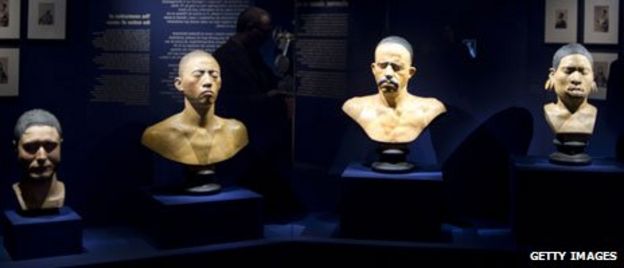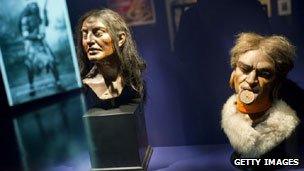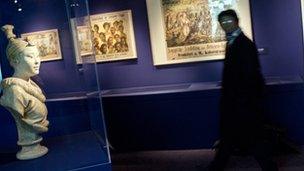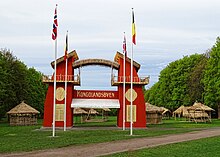- 27 December 2011
- Magazine
Friday, December 30, 2016
Sunday, December 11, 2016
Private businessmen from the corporate world were part of demonetisation decision-
No Secret: Private businessmen from the corporate world were part of demonetisation decision-making!

On November 8th, Mr.Narendra Modi’s Central Government launched a sudden and a historically unprecedented demonetisation of Rs.500/Rs.1000 notes. The preparation until then was said to be fundamentally ‘secretive’ and known to none except the Prime Minister and the Governor of the Reserve Bank. All the ensuing pain, deaths, economic distress, social upheaval and starvation brought about by this demonetisation is claimed to be ‘inevitable’ as the whole operation was meant to be executed secretively and therefore, left very little room for planning.
However, you only have to see the Notification launching this demonetisation; you will realise, shockingly, that the country has been lied to. The Notification says that this demonetisation is to give effect to the recommendation of the Central Board of the Reserve Bank of India. And, as a matter of fact, this Central Board of the Reserve Bank of India comprises private businessmen from the corporate world!
The November 8th Notification is hosted on the website of the Finance Ministry: http://finmin.nic.in/172521.pdf. This Notification begins with the words:
“Whereas, the Central Board of Directors of the Reserve Bank of India(hereinafter referred to as the Board) has recommended that bank notes of denominations of the existing series of the value of five hundred rupees and one thousand rupees (hereinafter referred to as specified bank notes) shall be ceased to be legal tender;…”
The bold part speaks of the ‘Central Board of Directors of the Reserve Bank of India’, and the underlined part speaks of the recommendation made by this Board – to demonetise all existing series of notes of Rs.500 and Rs.1000. We could now see who all are part of this Central Board. However, for the legally minded, a paragraph more of information would be helpful.
The November 8th Notification then 1) says that the Central Government is thereby acting on the said recommendation of the said Central Board made under Section 26(2) of the Reserve Bank of India Act, 1934 (‘RBI Act’) and 2) proceeds to demonetise the existing series of Rs.500 and Rs.1000 notes. You could easily guess now that Section 26(2) of the RBI Act 1) authorises the Central Board of the Reserve Bank of India to make a recommendation to the Central Government to demonetise any series of existing notes and, 2) the Central Government is consequently authorised to act on that recommendation. You would be right. This is the very process now adopted by the Central Government and is described in the November 8th Notification.
The Central Board of the Reserve Bank of India (‘RBI’) is constituted under Section 8 of the RBI Act. Full text of the RBI Act – though not updated is still reliable for our purpose - may be found on the website of the RBI at: https://rbidocs.rbi.org.in/rdocs/Publications/PDFs/RBIAM_230609.pdf. This Central Board is comprised of 21 individuals of whom 4 are bound to be from the private sector. (Sections 8, 9 and 10 of the RBI Act). The website of the RBI does not list out all of the directors of its Central Board. However, it does list out these private businessmen among the directors of its Central Board (https://www.rbi.org.in/scripts/bs_viewcontent.aspx?Id=2453):

Dr.Nachiket M. Mor
The private sector connection or accomplishment of Dr.Nachiket M. Mor is described on the RBI website as:
“He worked with ICICI from 1987 to 2007 and was a member of its Board of Directors from 2001 to 2007. From 2007 to 2011, he served as the founding President of ICICI Foundation and during this period was also the Chair of the Governing Council of IFMR Trust and Board Chair of FINO. He is now the Board Chair of CARE India and, … In the past he has also served as a Board Member of Wipro for five years and Board Chair of the Fixed Income Money Market and Derivatives Association of India for two years.”
The internet search for Dr.Nachiket M Mor shows that he is currently the India Country Director for Bill and Melinda Gates Foundation – a fact also stated on the website of the Bill and Melinda Gates Foundation (http://www.gatesfoundation.org/Where-We-Work/India-Office/).
The next listed director of the Central Board from the private sector is Mr.Natarajan Chandrasekaran.

Mr.Natarajan Chandrasekaran
His private sector connection or accomplishment is described on the RBI website as under:
“Shri Natarajan Chandrasekaran has been serving as the CEO and MD of Tata Consultancy Services (TCS). .. Shri Chandrasekaran has over 28 years of experience in global software industry and business operations. He served as the Chairman of NASSCOM, and was the Chairperson of the IT Industry at the World Economic Forum, Davos for 2015-16. He is a member of Indo – US CEO Forum as well as India’s bilateral business taskforces for Australia, UK and Japan. ..”
That is, Mr.Natarajan Chandrasekaran is currently, the CEO and managing director of Tata Consultancy Services, a leading software service company in the private sector and the website of TCS also says so (http://www.tcs.com/investors/corp_governance/Pages/default.aspx).
The next listed director of the Central Board from the private sector is Mr.Bharat Narotam Doshi.

Mr.Bharat Narotam Doshi:
His private sector connection or accomplishment is described on the RBI website as:
“Shri Doshi is a former Executive Director and Group CFO of Mahindra & Mahindra Limited. He was also the Chairman of Mahindra & Mahindra Financial Services Limited since April 2008…
He is the Chairman of Mahindra Intertrade Limited.
He is also an Independent Director of Godrej Consumer Products Limited.
Shri Doshi is also on the Governing Board of The Mahindra United World College of India, K.C. Mahindra Education Trust and Mahindra Foundation….
Over the last 35 years, Shri Doshi has been actively involved with the work of chambers of commerce and industry being a member of various expert committees. He served as the President of Bombay Chamber of Commerce and Industry for the year 2009-10.”
Moving further, the Reserve Bank of India General Regulations, 1949 (on the RBI website at: https://www.rbi.org.in/commonman/upload/english/content/pdfs/70981.pdf) specifies that a month’s notice ought to be given to each of the directors of the Central Board to transact any specific business and even when an emergency meeting is to be called at a short notice, each of the director present in India is bound to be informed of the meeting and its agenda. Other provisions of this Regulation would ensure that the four private businessmen in the Central Board are kept in the loop about the urgent business of the Central Board. Thereby, the recommendation made by the Central Board to the Central Government for demonetisation was just not a secret at all as private businessmen were plainly involved in formulating and sending that recommendation to the Central Government. I challenge the Central Government to dispute what I have just said here.
When such participation by private businessmen in the Central Board is statutorily provided for, it is a mystery that Mr.Modi’s Central Government chose to invoke this leaky demonetisation process provided in the RBI Act and still claim that it was all secretively executed. To repeat, there was no legal room at all to exclude such private businessmen from this demonetisation planning – their participation was mandated by the law itself.
At this point, if you assume that the demonetisation provided under the RBI Act is only of the ordinary type such as ‘pre 2005 series Rs.500 notes to be phased out and exchanged at bank counters for the next 3 months’, you would be right. The demonetisation under the RBI Act is good just for that. Can you even imagine bankers and private businessmen forming the Central Board of the Reserve Bank possessing any expertise to recommend and lay down novel procedures to the Central Government to dry out terrorism funding? Incidentally, the 1978 regime apparently knew about the limitations of the demonetisation under the RBI Act and therefore, crafted a very new legislation to impose a different demonetisation.
It is therefore, surprising that the Central Government this time did not even care to take proper note of the 1978 demonetisation. To repeat, the extent of demonetisation now attempted is not supported at all under the RBI Act; even the 1978 demonetisation that was done on a much smaller scale by setting out numerous limitations upon citizens was done through a separate legislation (first through ‘The High Denomination Bank Notes (Demonetisation) Ordinance, 1978 (1 of 1978 )’ and then through, ‘The High Denomination Bank Notes (Demonetisation) Act, 1978’ at: https://indiankanoon.org/doc/1547/).
Specifically, the 1978 demonetisation was brought in independently of what is stated in Section 26 of the RBI Act – (Section 3 of the 1978 Act had said: High denomination bank notes to cease to be legal tender - On the expiry of the 16th day of January, 1978, all high denomination bank notes shall, notwithstanding anything contained in section 26 of the Reserve Bank of India Act, 1934, (2 of 1934) cease to be legal tender in payment or on account at any place.) Strangely this time, Section 26 of the RBI Act that was thought to be highly inadequate as early as 1978 for even that limited demonetisation is the very provision embraced by Mr.Modi’s Central Government to effect a historically unprecedented demonetisation! (November 8th Notification - Now, therefore, in exercise of the powers conferred by sub-section (2) of section 26 of the Reserve Bank of India Act, 1934 (2 of 1934) (hereinafter referred to as the said Act), the Central Government hereby declares that the specified bank notes shall cease to be legal tender with effect from the 9th November, 2016 to the extent specified below..).
For these reasons, I have no hesitation in saying that the November 8th Notification is bound to be stayed first and eventually quashed by the Courts. It has no prospect of being upheld by any of our 24 High Courts or the Supreme Court should a proper petition be filed; the present petitions challenging demonetisation are quite disappointing, in my view. The blame for such setback, however, should squarely fall upon none but the Central Government itself for its legally awkward exercise.
The Parliament of India could alone impose all the hardship, suffering and devastation that this demonetisation is imposing upon the people of this country; statutorily conferred or customarily enjoyed rights of the citizens cannot be curtailed otherwise under our written Constitution. However, the Constitution itself allows for an emergent legislation by the Central Government in the form of an ‘Ordinance’. And, a Notification could only put into effect what has already been prescribed by a duly made law – it can never by itself, curtail the rights of citizens. These are ordinary principles of our Constitution and Administrative Law.
What has just been done is a mere notification to wipe out 86% of the cash in circulation among people who constitute 1/5th of humanity during peace-time – by a Government limited by a written and the most voluminous Constitution of the world! The world is on notice.
--

K.V.Dhananjay
Advocate, Supreme Court
Thursday, November 3, 2016
Wednesday, November 2, 2016
Monday, October 31, 2016
human zoo 2
http://www.bbc.com/news/magazine-16295827
https://en.wikipedia.org/wiki/Human_zoo#1940s_to_the_present
http://www.bbc.com/news/magazine-16295827
https://www.theguardian.com/world/2014/apr/29/norway-human-zoo-africans-as-inmates
http://gawker.com/5875175/human-zoo-allowed-tourists-to-throw-bananas-at-islanders

https://en.wikipedia.org/wiki/Human_zoo#1940s_to_the_present
http://www.bbc.com/news/magazine-16295827
https://www.theguardian.com/world/2014/apr/29/norway-human-zoo-africans-as-inmates
http://gawker.com/5875175/human-zoo-allowed-tourists-to-throw-bananas-at-islanders
'Human Zoo' Allowed Tourists to Throw Bananas at Islanders
55.02K

Maureen O'Connor
Filed to: RACISM
1940s to the present[edit]
The concept of the human zoo has not completely disappeared. A Congolese village was displayed at the Brussels 1958 World's Fair.[17] In April 1994, an example of an Ivory Coastvillage was presented as part of an African safari in Port-Saint-Père, near Nantes, in France, later called Planète Sauvage.[18]
An African village, intended as a craft and cultural festival, was held in Augsburg Zoo in Germany in July 2005, and was subject to widespread criticism.[19] In August 2005, London Zoo displayed four human volunteers wearing fig leaves (and bathing suits) for four days.[20]In 2007, Adelaide Zoo ran a Human Zoo exhibition which consisted of a group of people who, as part of a study exercise, had applied to be housed in the former ape enclosure by day, but then returned home by night.[21] The inhabitants took part in several exercises, much to the amusement of onlookers, who were asked for donations towards a new ape enclosure. In 2007, pygmy performers at the Festival of Pan-African Music were housed (although not exhibited) at a zoo in Brazzaville, Congo.[22] February 21, 2016 an editorial by Jerry Fredrickson in the Duluth News Tribune in Duluth, Minnesota suggested adding a Native American encampment to the Lake Superior Zoo in order to "bring tourists by the busload." [23]
See also[edit]
References[edit]
- Jump up^ Mullan, Bob and Marvin Garry, Zoo culture: The book about watching people watch animals, University of Illinois Press, Urbana, Illinois, Second edition, 1998, p.32. ISBN 0-252-06762-2
- Jump up^ Mullan, Bob and Marvin Garry, Zoo culture: The book about watching people watch animals, University of Illinois Press, Urbana, Illinois, Second edition, 1998, p.98. ISBN 0-252-06762-2
- Jump up^ "The Museum of Hoaxes". Museum of Hoaxes. Retrieved 11 April 2016.
- Jump up^ "On A Neglected Aspect Of Western Racism" by Kurt Jonassohn, December 2000, Montreal Institute for Genocide and Human Rights Studies
- Jump up^ Roberto Aguirre, Informal Empire: Mexico And Central America In Victorian Culture, Univ. of Minnesota Press, 2004, ch. 4
- ^ Jump up to:a b "Man and Monkey Show Disapproved by Clergy", The New York Times, September 10, 1906.
- Jump up^ "Discover Paris! - Newsletter". Retrieved 11 April 2016.
- Jump up^ See Charles Dudley Arnold's photo similar human displays had been seen of six men dressed in Native-American costume, in front and on top of a reconstruction of a Six-Nations Long House.
- Jump up^ Anne Maxell, "Montrer l'Autre: Franz Boas et les soeurs Gerhard", in Zoos humains. De la Vénus hottentote aux reality shows, Nicolas Bancel, Pascal Blanchard, Gilles Boëtsch, Eric Deroo, Sandrine Lemaire, edition La Découverte (2002), pp. 331-339, in part. p. 333,
- Jump up^ Cincinnati Zoo and Botanical Garden, Ohio Historical Society.
- Jump up^ Jim Zwick (March 4, 1996). "Remembering St. Louis, 1904: A World on Display and Bontoc Eulogy". Syracuse University. Retrieved 2007-05-25.
- Jump up^ "The Passions of Suzie Wong Revisited, by Rev. Sequoyah Ade". Aboriginal Intelligence. January 4, 2004.
- Jump up^ Bradford, Phillips Verner and Blume, Harvey. Ota Benga: The Pygmy in the Zoo. St. Martins Press, 1992.
- ^ Jump up to:a b c d
Human zoos: When real people were exhibits
By Hugh SchofieldBBC News, Paris
Media captionCurator Nanette Snoep gives a tour of the Savages exhibition
An exhibition in Paris looks at the history of so-called human zoos, that put inhabitants from foreign lands, mostly African countries, on display as article of curiosity.Over four centuries from the first voyages of discovery, European societies developed an appetite for exhibiting exotic human "specimens" shipped back to Paris, London or Berlin for the interest and delectation of the crowd.What started as wide-eyed curiosity on the part of observers turned into ghoulish pseudo-science in the mid-1800s, as researchers sought out physical evidence for their theory of races.Finally, in high colonial times, hundreds of thousands of people visited "human zoos" created as part of the great international trade fairs.Here they could watch whole villages of Kanaks or Senegalese, with real-life inhabitants paid to act out war dances or religious rituals before their colonial masters.The story is told at the Quai Branly museum in Paris until June 2012, mainly through the display of paintings, old photographs, archive film, posters and postcards.The aim of the exhibition is explicit - to teach how Western societies created a sense of "the other" in regard to foreign peoples, thus legitimising their eventual domination.
"What we tried to do is conduct a kind of archaeology of the stereotype," says curator Nanette Snoep.The display, entitled "Inventing the Savage", was the inspiration of the Caribbean-born former international footballer Liliane Thuram, who today heads his own anti-racism foundation."I have long been interested in slavery because of the way my own family was affected by it," says Thuram."It became clear to me that racism was above all an intellectual construction. And as such, it was also susceptible to de-construction."That's what we are trying to do with the exhibition: putting on display the information that allows people to understand why there are still faultlines in society based on the colour of our skins."At the start, all was relatively innocent. One of the first paintings is of four Greenlanders brought to the Danish court in 1664 by a Dutch sailor. They stare out with a look as bewildered as those that must have been on the faces of their captors."What is fascinating is that on top of the painting are written their names. In other words, at this early stage they are seen as individuals. Exotic yes, but people," says Snoep. "It is later when the names disappear that the relationship deteriorates."Another early portrait is of the Tahitian man called Omai, who was brought to the court of King George III in London by the explorer Joseph Banks.

Image captionEthnographic displays disappeared after World War II
In his book The Age of Wonder, Richard Holmes describes Omai as "quick-witted, charming and astute. His exotic good looks… were much admired in society, especially among the more racy of the aristocratic ladies."But describing this same portrait, Holmes adds: "It is not clear if [Omai] is Banks's companion or his trophy."Guest or specimen? If there was room for ambiguity in the early days - when explorers and explored often found each other mutually intriguing - this disappeared with the new certainties of the colonial epoch.The saddest emblem of the coming era was the South African Saartjie Baartman, later to be known as the Hottentot Venus. Born around 1780, she was brought to London in 1810 and put on display.She had the genetic characteristic known as steatopygia - extremely protuberant buttocks and elongated labia - which evidently delighted the cabaret-goers of the British capital.

Image captionCan it teach us anything about modern attitudes to race?
Later she came to Paris, and was analysed by the budding racial anthropologists. According to the exhibition catalogue, one scientist described her as having the "buttocks of a mandrill".When she died in poverty, her skeleton was put on display. It remained on show in the Museum of Mankind in Paris until 1974. In 2002, her remains were repatriated and buried in South Africa."Baartman marks the start of the period of description, measurement and classification, which soon leads us to hierarchisation - the idea that there are lesser and greater races," says Snoep.The climax of the story comes with the imperialist high noon of the late 19th and early 20th Centuries.A European public fed on notions of Christian evangelism and cultural superiority was titillated by re-enactments of life in the colonies which became a regular part of international trade fairs.Entrepreneurs put on travelling stage shows featuring Hindu rope-dancers, Arabian camel-herders, Zulu warriors or hunters from New Caledonia. Whole African villages were recreated to allow Europeans a glimpse of "primitive" living.The most famous impresario was "Buffalo Bill" Cody whose Wild West shows - according to the exhibition organisers - were another example of racial stereotyping.
Some 35,000 people are reckoned to have taken part in the displays. Most were paid."They were shows. Public entertainment. The villagers from Africa or India were acting out a role. Significantly there were barriers between the public and the performers, to reinforce the notion of separateness," says Snoep.These ethnographic displays died out after World War II. Oddly it was Hitler who first banned them. The last was in Belgium in 1958.The organisers of Inventing the Savage claim that these "human zoos" were seen by 1.4 billion people overall - and that they therefore played an important, and so far unacknowledged, part in the development of modern racism."What is left of this incredible story today?" intones the voice-over on a film which is part of the exhibition."A view of Africa and its people that is still contemptuous. A certain way in the West of believing oneself superior. Above all the story helps explain how millions of westerners were manipulated into a belief in the inequality of races."Inventing the Savage provides plenty of food for thought, and there is no-one alive today who would for a minute defend the practice of human ethnographic exhibitions.

Image captionBelgium hosted the last such display in 1958
The show has been well-received but has come into some criticism for what some see as its heavy-handed didacticisim - as well as a kind of historical cherry-picking that leaves out what does not fit the message.There is no mention for example of what the human "exhibits" themselves thought when brought to Europe. They are presented as victims, nothing more. Nor are the reactions of the audience explored. Maybe these were more complex than mere colonial self-satisfaction.Writing in the left-wing newspaper Libération, columnist Marcela Iacub detects in the show "the frankly conservative role… of militant anti-racists and the consensus that they seek to create."The spirit of the exhibition, she says, is a kind of "censorship, accompanied by the promotion of pedagogical, uplifting messages that will eradicate in us all those dangerous ideas that survive."Iacub says it is ironic that it was just that kind of misguided moral superiority - the need to improve the unenlightened - that led to Europeans colonising Africa in the first place."In the eyes of the militant anti-racist, we are all violent, easily manipulated, barbarous, bloodthirsty, and incapable of thinking without the aid of people to teach us. In fact just like the 'savage' of old!"
Subscribe to:
Posts (Atom)
